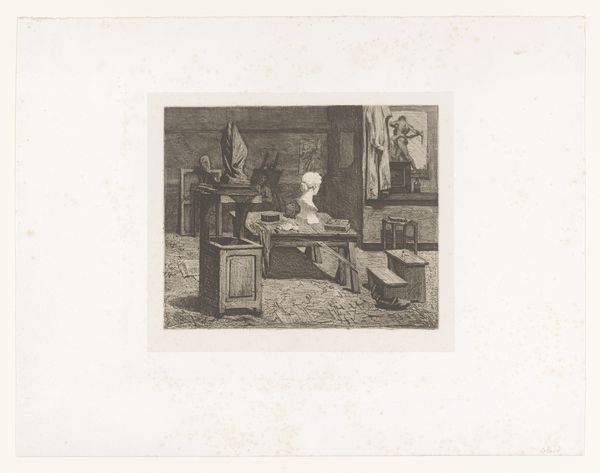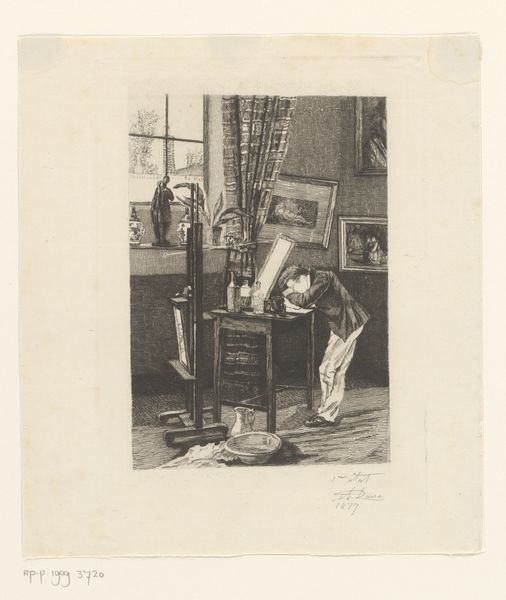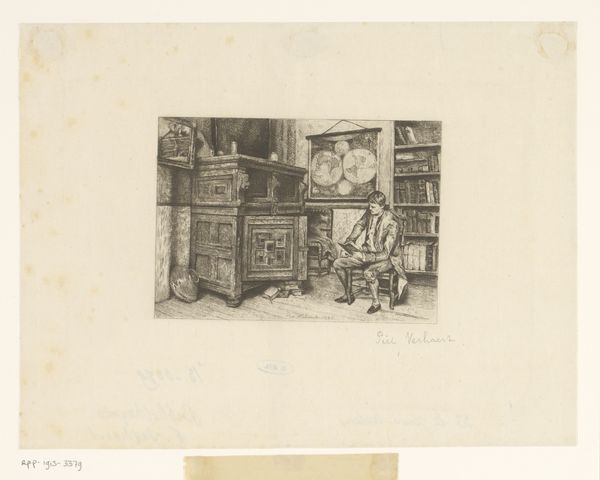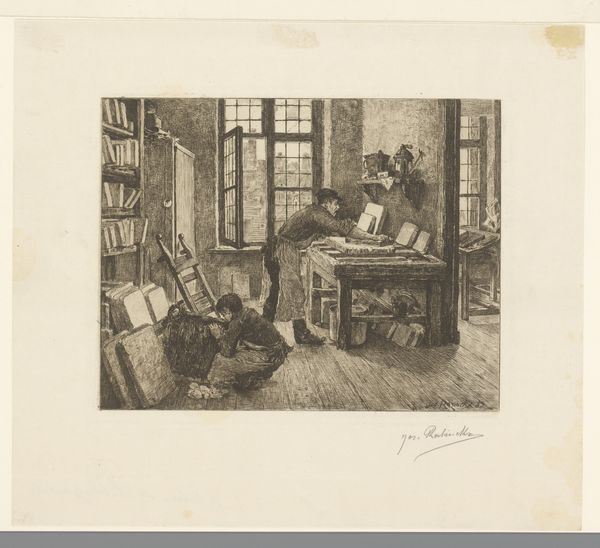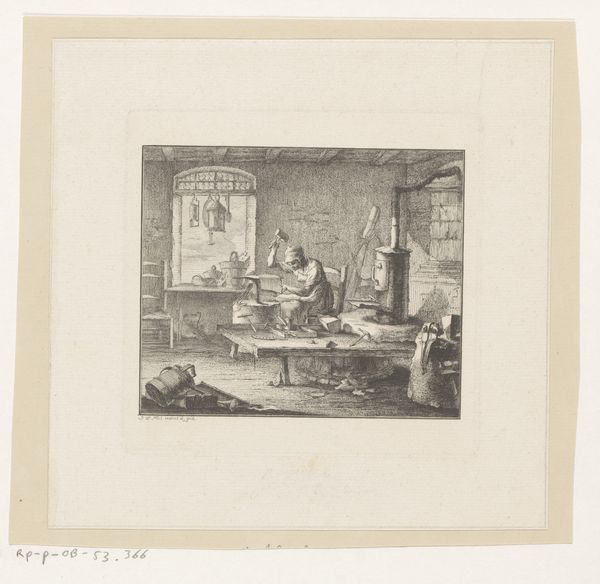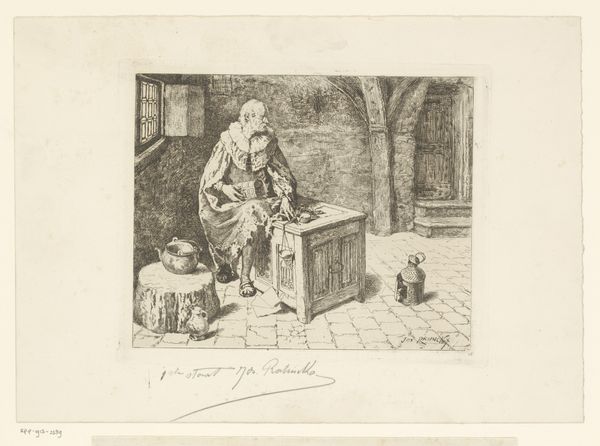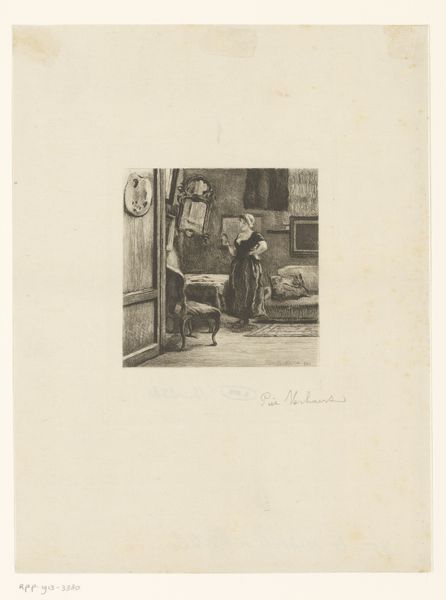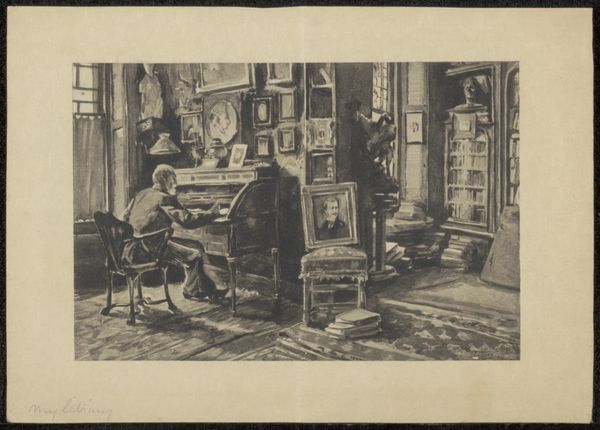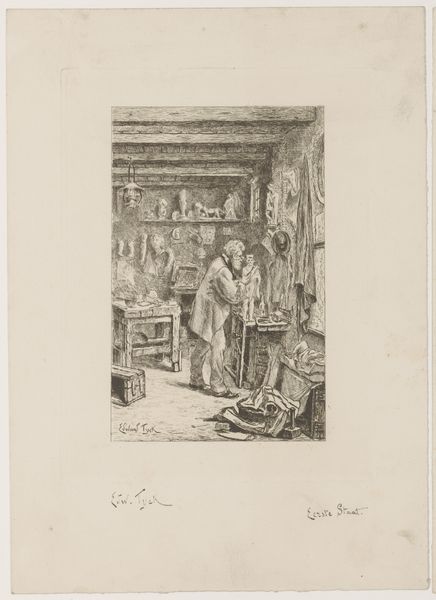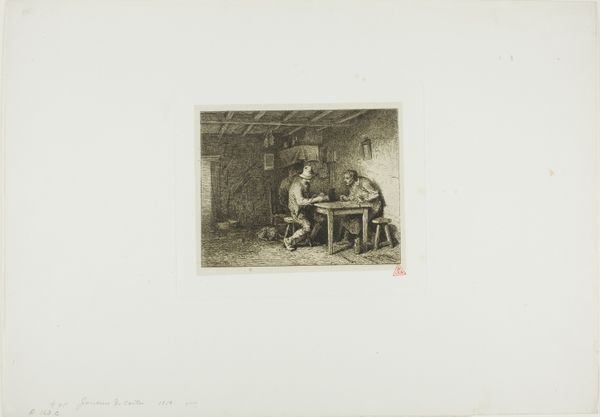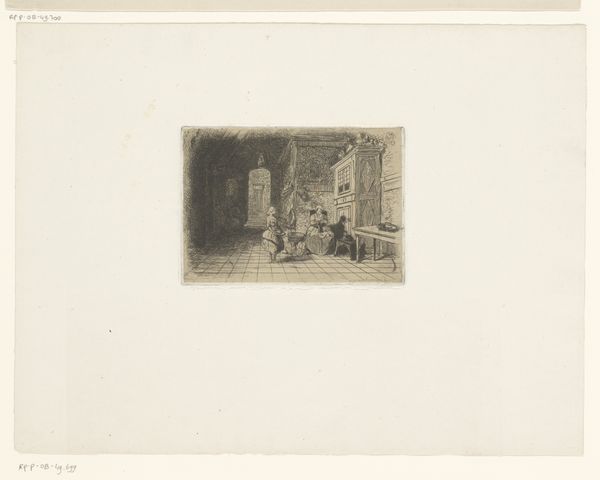
drawing, print, etching, ink
#
portrait
#
drawing
# print
#
etching
#
ink
#
genre-painting
#
academic-art
Dimensions: height 225 mm, width 257 mm
Copyright: Rijks Museum: Open Domain
Editor: This is "Werkplaats van Josué Dupon," created sometime between 1874 and 1909, using etching and ink. The etching depicts a studio space; it’s really busy with sculptures, tools, and drawings. It seems quite intimate and detailed, making you wonder about the artist’s process. What do you see in this depiction of a workspace? Curator: What strikes me is how this print invites us to consider the artist's means of production. Dupon has not only created an image, but also left a visual record of the very labor that underpins his art. Consider the prevalence of sculptures in various states. Editor: You're right! The studio feels like a factory. Is this focus on production common for academic art of this period? Curator: It certainly speaks to the changing role of the artist. Etching, as a repeatable medium, opens avenues for wider distribution and consumption of images. It transforms art from a unique object into a reproducible commodity. Editor: I guess I hadn't considered the implications of printing itself as part of the "materials." The print feels much more like a democratic medium. Curator: Precisely. Furthermore, let us reflect upon the arrangement of the scene. How is Dupon subtly showcasing his wares and, in effect, his labor? Where does artistic 'work' start and the 'art' begin? Is he drawing our eye toward the material processes that go into creation? Editor: I'm really learning to see the art, but also the artistic manufacturing behind it. It changes my whole appreciation! Curator: Exactly! Viewing art through a material lens reveals not just the object itself, but also the intricate network of labor, production, and consumption in which it is embedded.
Comments
No comments
Be the first to comment and join the conversation on the ultimate creative platform.

